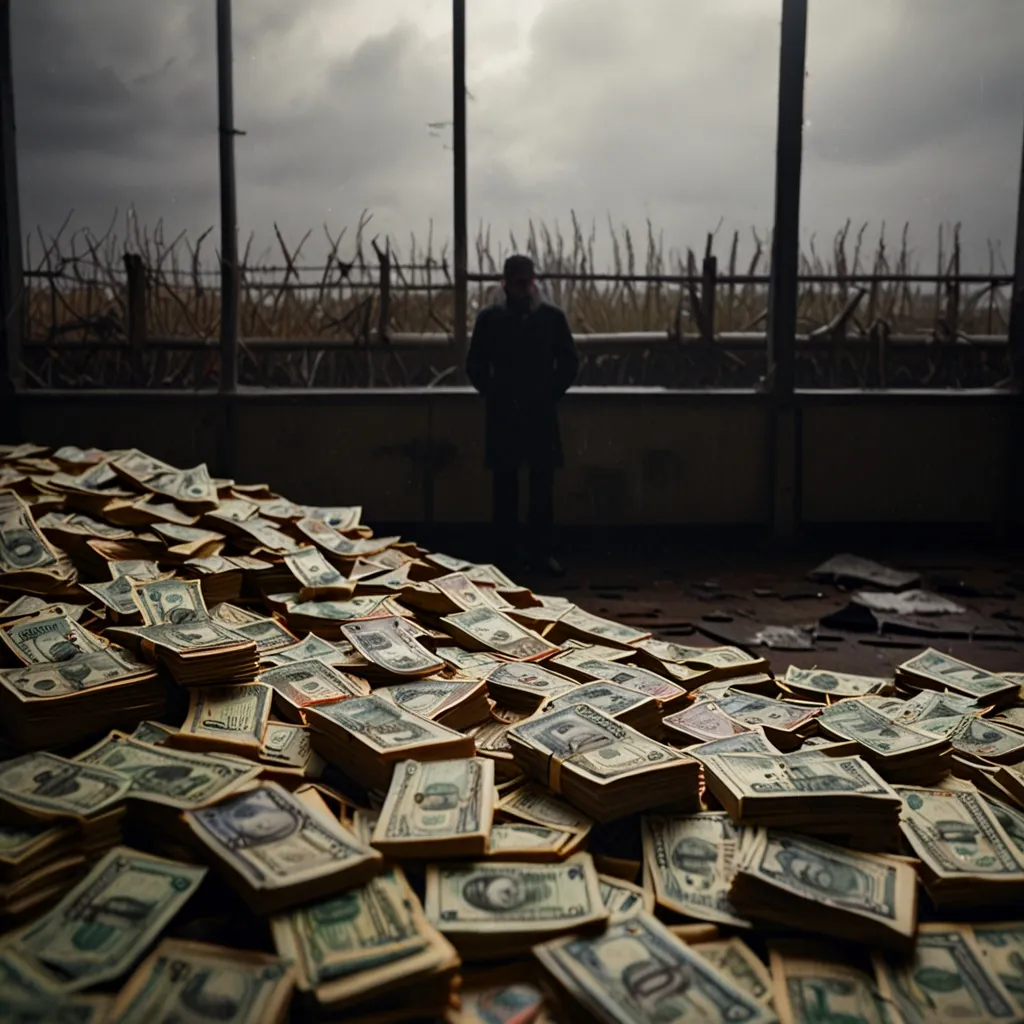In the early 1900s, the Soviets embarked on a bold and somewhat peculiar journey: they tried to abolish all forms of money. Think about it for a second—a modern industrialized country operating without money. It sounds impossible, right? But that was the Soviets’ grand plan right after they seized power in Russia. Let’s dive into the reasoning behind this strategy and the crazy impact it had on the Russian economy.
You’ve got to understand first why the Soviets were so eager to ditch money. They were heavily inspired by Karl Marx’s philosophy. Marx believed money stripped all human endeavors down to mere commodities. Basically, money dictated relationships, knowledge, friendships, and much more. Human value was measured externally, in terms of money, according to Marx. And because of this alienating nature of money, Marx saw it as the root of all evil.
The Soviets latched onto this belief like a lifeline. They thought getting rid of money would be the first step towards their communist dreamland. They wanted a centrally planned economy where people worked according to their abilities and received resources according to their needs. Sounds like a solid plan on paper, right? But as you’ll see, the reality was much more complicated.
Russia was in a pretty bad shape back then. Imagine more than 3.3 million Russians had just perished in World War I. The previous Tsarist government had gone overboard printing money to pay for the war. And then, boom! A civil war breaks out after the Soviets take over.
This upheaval led to even more deaths and chaos. Inflation was out of control, people were starving, supply chains were disrupted, and industries were shutting down because they had no fuel. Plus, some of Russia’s most fertile lands were occupied by enemy forces. Things were pretty bleak.
Given all of this, you’d think the logical move would be to fix these underlying issues before making any big reforms. But the Soviets had different plans. They decided to push ahead with their policy of abolishing money, dragging Russian society with them, kicking and screaming, into a moneyless world.
One of their first moves was seizing control of the banks. They disassembled Russian banks, redirected their reserves and incomes to the government, and effectively set up a state monopoly on banking. This also meant that any prior debt held by the state was conveniently canceled.
Of course, this created a bunch of new problems. The Soviets needed funds to run the state-controlled industries and keep up their efforts in the civil war. With the banks out of the picture, they had no one to lend them money. So, they started jacking up taxes and collecting them as fast as they could. But even that wasn’t enough to bridge the budget gaps.
That’s when they turned to the last resort: printing more money. Lots of it. This led to a runaway inflation that was so intense it made their currency almost worthless. Inflation hit a staggering 598% by the end of 1918 and soared to an unbelievable 1,376% the following year.
The worthless currency meant that farmers no longer had any incentive to produce more than what they needed. This kicked off a food shortage, plunging cities into hunger. The Soviet government had to resort to forcefully taking food from farmers to feed the cities, but this only led to more problems. The farmers, deprived of their produce, faced famine themselves, weakening the agricultural sector, and creating even more severe food shortages.
Things got so desperate that reports of human meat being sold, including that of children, started surfacing. It was an utterly horrific time.
So, it’s no surprise that the idea of abolishing money backfired spectacularly. The Soviets had imagined that making money worthless would destroy the power of wealthy hoarders, enabling equal distribution of resources and reducing societal hostilities. But the opposite happened. People started hoarding whatever resources they could find. Even government bodies and entire cities were competing against each other, weakening the state’s overall functionality.
By 1920, the Soviets had won the civil war, and they diverted their focus to the new economic war. At first, they doubled down on their effort to eliminate money, which is kind of crazy if you think about it. This involved printing even more money to pay for essentials like food and medicine, thereby worsening the inflation crisis.
Inflation hit a record 164%, and people had had enough. Revolts started bubbling up. The Soviet government finally realized that their “War Communism”—their grand scheme to eradicate money—had gone way too far. They reversed their course, issuing a gold-backed currency, making the Central Bank independent again, and rebalance the budget. From 1923, things began to stabilize, at least until a certain mustached man took power, but that’s a tale for another time.
In the end, the Soviets’ attempt to rid Russia of the “great evil” of money resulted in untold tragedies, with millions dying. It’s a stark reminder that while ideals are great, reality often works very differently. Rapid reforms with little oversight can lead to disaster; slow and incremental changes, allowing time for people to adapt, usually work better.
The Soviets aimed for a moneyless utopia but ended up causing enormous suffering. It’s a cautionary tale of how not to implement radical change.






